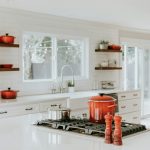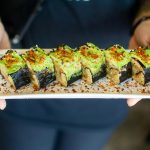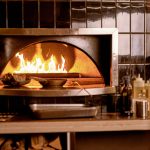In the restaurant business, especially in the rapidly growing vegan food industry, the design and layout of your kitchen can significantly impact your business’s overall efficiency and productivity. The kitchen is the heart of the restaurant, where the magic happens; it’s where raw ingredients are transformed into delicious meals that your customers will savor. Hence, it’s crucial to ensure that your kitchen is designed to maximize efficiency, promote workflow, and reduce waste. In this article, we delve into various factors that you should consider while designing your kitchen layout for a vegan restaurant. Let’s get started!
Considering the Space and Layout
When planning your kitchen layout, it’s essential to consider the available space. A well-designed kitchen balances the need for sufficient cooking and preparation areas with the necessity for ample storage, without compromising the staff’s ability to move around easily.
Also read : What strategies are most effective for managing seasonal fluctuations in a beachfront bar?
To maximize efficiency, your kitchen should have a logical, streamlined flow. This means that the equipment, storage areas, and work stations should be arranged in a way that minimizes unnecessary movement. For instance, the prep station should ideally be close to the storage areas, allowing your staff to quickly grab the necessary ingredients.
Furthermore, given the nature of a vegan restaurant, you might want to consider having dedicated areas for different types of food preparation. For example, you could have separate sections for raw food preparation, cooked food, and baking. This will not only help prevent cross-contamination but also streamline the cooking process.
This might interest you : What strategies are most effective for managing seasonal fluctuations in a beachfront bar?
Choosing the Right Equipment
The right equipment can make or break your kitchen’s efficiency. As a vegan restaurant, your kitchen may have different needs compared to a conventional one. For example, you might require larger refrigerators for storing fresh produce or specialized equipment for preparing certain vegan dishes.
The quality and durability of your equipment will also significantly affect your kitchen’s efficiency. High-quality, commercial-grade equipment will ensure consistent results, reduce downtime due to equipment failure, and ultimately enhance your restaurant’s productivity.
It’s also important to keep in mind that your equipment should be laid out in a way that complements your cooking process. The stove, for example, should be placed close to the prep station and serving area for easy access.
Designing the Menu with Efficiency in Mind
Your menu is a critical component of your restaurant’s operation. How it’s designed could greatly influence your kitchen’s efficiency. For a vegan restaurant, you’ll need to consider a variety of factors, such as the ingredients required, the preparation time, and the cooking method.
Remember that a more extensive menu might require more ingredients, more storage, and more staff to prepare the dishes. On the other hand, a well-curated, concise menu can streamline your operations, reduce waste, and ensure that you consistently deliver high-quality dishes to your customers.
Prioritizing Storage and Organization
Proper storage and organization are critical for any kitchen to function smoothly. For a vegan restaurant, where fresh ingredients are a primary component of the menu, this becomes even more important.
You’ll need to have sufficient storage space for your ingredients, ensuring that they are easily accessible and organized. Moreover, proper storage will help maintain the freshness and quality of your ingredients, which is crucial for a vegan restaurant.
Your storage area should be designed in such a way that it facilitates easy inventory management. Regularly rotating your stock and removing expired items should be a simple task, not a logistical nightmare.
Training Staff for Efficiency
Last but certainly not least, the efficiency of your kitchen will depend largely on your staff. Well-trained staff who understand the layout of the kitchen, the location of ingredients, and the most efficient way to use the equipment will be a great asset to your vegan restaurant.
Training your staff to handle vegan-specific ingredients and cooking techniques will also enhance your kitchen’s efficiency.
Remember, a well-designed kitchen layout can only do so much. Ultimately, it’s the people who work in the kitchen who bring everything together and turn efficiency into great service for your customers.
Integrating Technology into your Kitchen Layout
The use of technology in the commercial kitchen is not a new concept. However, as the demand for plant based food is increasing, it has become essential for vegan restaurants to integrate modern technology into their kitchen design. This can enhance the kitchen’s efficiency, improve the food service, and streamline your food production process.
Investing in high-tech kitchen equipment such as programmable ovens, smart fridges, and digital scales can significantly increase the productivity of your kitchen staff. For instance, programmable ovens can be set to cook at specified temperatures and times, eliminating the need for constant monitoring. Smart fridges can alert you when the temperature rises above a safe level or when a particular ingredient is running low, ensuring food safety and reducing wastage.
Aside from equipment, consider utilizing software systems for inventory management and order tracking. These systems can provide real-time updates on your stock levels and help manage food orders, thereby enhancing efficiency and minimizing errors.
While integrating technology into your kitchen layout may require a significant initial investment, the long-term benefits in terms of improved efficiency, reduced waste, and increased productivity are well worth the expense.
Maintaining Sustainability and Ethical Practices
In the world of vegan food, sustainability and ethical practices play a significant role. Therefore, your kitchen design should reflect these values. This not only enhances your business plan and aligns with your brand’s mission but also appeals to your customers, many of whom choose vegan food for its environmental benefits.
One way to incorporate sustainability into your kitchen layout is by choosing energy-efficient appliances. These use less electricity and water, reducing your restaurant’s carbon footprint. Another step towards sustainability is waste management. Implement strategies to minimize waste, such as composting food scraps and recycling where possible.
When sourcing kitchen equipment, choose suppliers who follow ethical practices. This includes those who provide fair wages to their workers and maintain environmentally friendly manufacturing processes.
By incorporating sustainability and ethical practices into your kitchen design, you’re not only increasing efficiency but also making a positive impact on the environment and society.
Conclusion
In conclusion, designing a kitchen layout for a vegan restaurant involves careful planning and strategic thinking. From the initial space planning to the selection of high-quality, efficient kitchen equipment, every aspect should be meticulously thought out to ensure a smooth workflow, minimize waste, and maximize productivity.
Furthermore, remember that your kitchen layout is just one part of the equation. A well-trained team, a thoughtfully designed menu, effective storage and organization strategies, and the right use of technology all play crucial roles in ensuring your vegan restaurant operates at its peak efficiency.
Finally, as a vegan business, it’s important to uphold the principles of sustainability and ethical practices in all aspects of your operations, including your kitchen design. This not only gives credibility to your brand but also makes a positive contribution to the wider world. Thus, with the right planning and execution, your vegan restaurant kitchen can become a hub of efficiency and productivity, setting you up for long-term success in the rapidly evolving world of plant-based food service.











